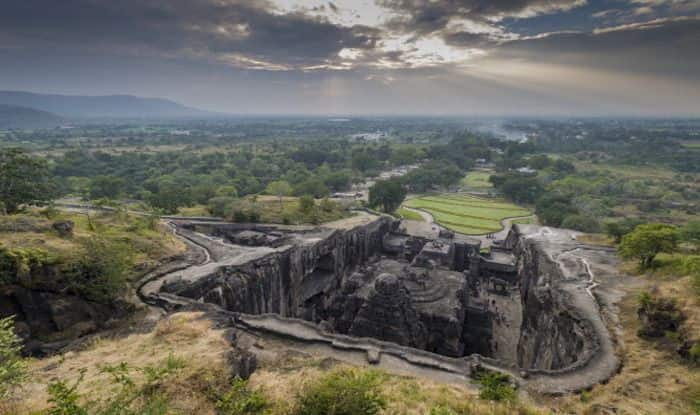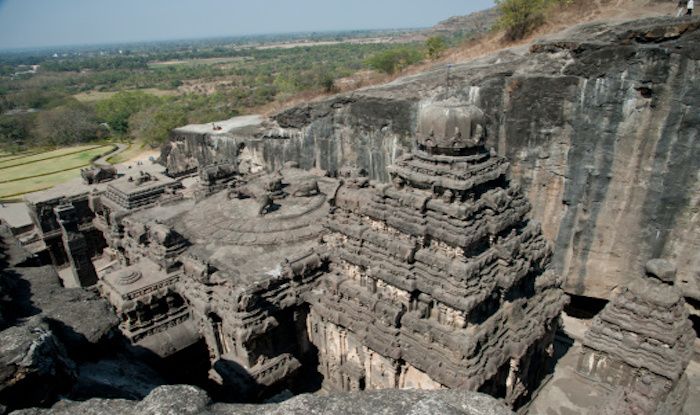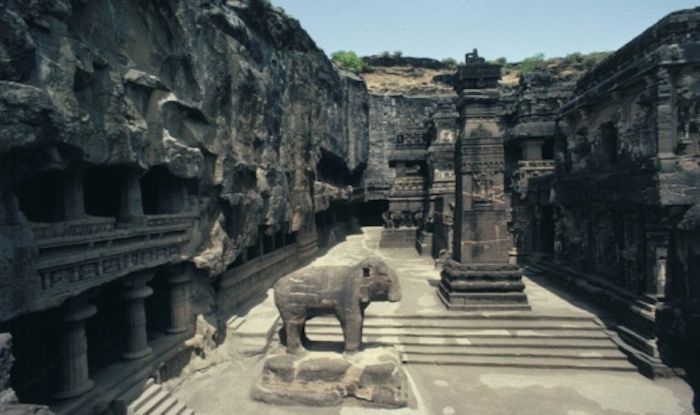
By clicking “Accept All Cookies”, you agree to the storing of cookies on your device to enhance site navigation, analyze site usage, and assist in our marketing efforts Cookies Policy.

Carved top down with just three different types of chisels and hammers, Ellora cave temples is astonishingly beautiful. It is a Unesco World Heritage Site; one thats needs to be seen to be appreciated. Located 30 km ( 45 minute by car) from Aurangabad, Maharashtra, Ellora is the epitome of ancient Indian rock-cut architecture. It was carved out laboriously by Buddhist, Hindu and Jain monks over five centuries.
The caves are famous for their sculptures strewn over all the 34 (12 Buddhist, 17 Hindu and 5 Jain) different caves temples. But it’s shining glory is the Kailasa temple (cave 16); the world’s largest monolithic sculpture, carved out by 7000 labourers over a period of 150 years. It was built in AD 760 by King Krishna 1, in honour of Shiva and named after his abode in the Himalayas. It covers an area double the size of the Parthenon in Athens, to give an idea of it’s grandiosity.
Several intricately carved panels in the temple complex depict scenes from the Ramayana, Mahabharata and adventures of Krishna. The monolithic pillars in the courtyard, flanking the entrance on both sides are also worth admiring. Hike up an overgrown foot trail that’ll take you to the top from where you can get a bird’s eye-view of the entire temple complex.
The Buddhist and Hindu caves are divided by the Kailasa temple in the middle. The austere atmospheric of the dark cool interiors, among the serene yet imposing statues, make walking through the caves an experience in itself. You’ll be struck by their spiritual power, its size, and the intricacy of its carvings and achievement in terms of engineering and architecture.

Image courtesy: Getty
The sculpture of Ravana trying to lift Mount Kailash in the complex is a definitive landmark in Indian Architecture. There are multiple sculptures on the rocks and each of them have a definitive legacy.
The famed rock pillar known as the Dhwajasthamba, needs special mention; is it the photo of this rock that we see on pamphlets and on the internet.

Image courtesy: Getty
As opposed to Ajanta caves that are carved into a sheer rock face, the Ellora caves gave architects the opportunity to build large courtyards in front of shrines, giving the sculptures a surreal quality. It is also interesting to note that the coexistence of Buddhist, Hindu and Jain architecture at one site indicates a lengthy period of religious tolerance.
For breaking news and live news updates, like us on Facebook or follow us on Twitter and Instagram. Read more on Latest Articles News on India.com.